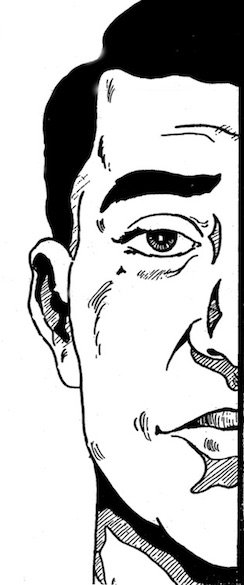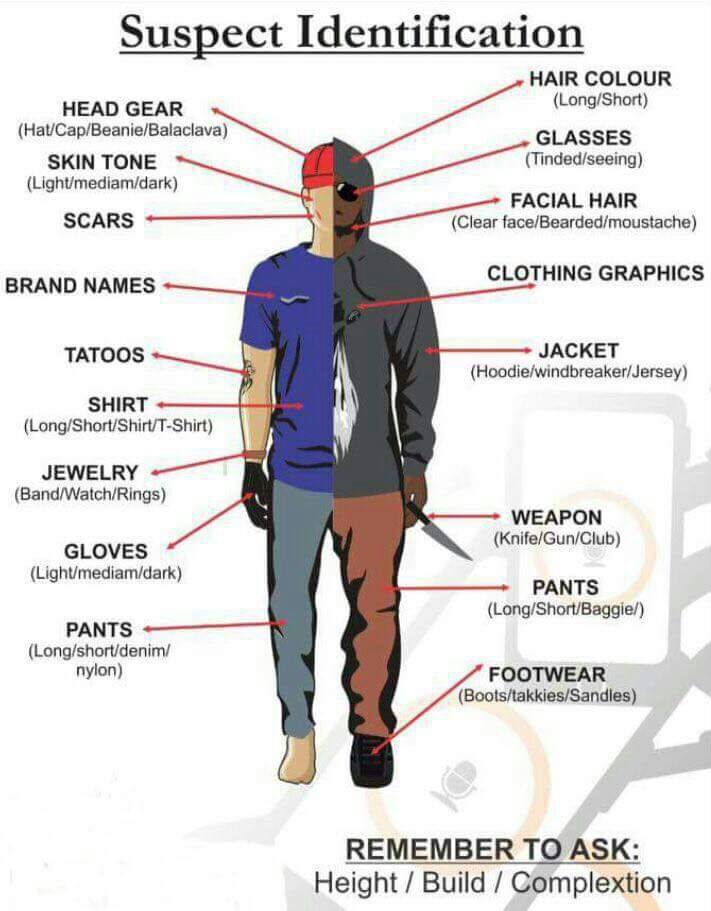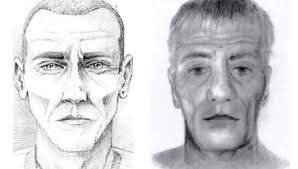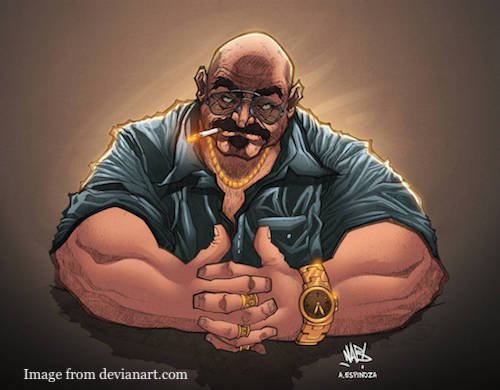SESSION 1: CONTENTS
A. Criminal profiling
Complexion
Learn how to describe the suspect's features. Use the vocabulary below for your project.

- HAIR
- Color: Black, brown red, etc. (note if dyed)
- Texture: Straight, wavy, curly, lightly curled. (note if processed)
- Hairline: Low on forehead, receding, "widow's peak" at center, etc.
- Style: Neatly combed, unkempt; parted; short, long, sideburns.
- FOREHEAD
- Height: High, low, wide, narrow.
- Skin: Smooth, light or heavy creases, wrinkled.
- NOSE
- Shape: Long, wide, flat, pug, Roman, etc.
- Nostrils: Wide, narrow, flared.
- CHEEKS
- Flesh: Sunken, filled out, dried, oily.
- Wrinkles: "Calliper" lines beside nose, mouth, (if marked); other.
- CHEEK BONES
- Prominence: High or low, wide or low, also note whether fleshy.
- EARS
- Size: Large, small, etc.
- Prominence: Protruding or flat against head.
- MOUTH
- Corners: Turned up, turned down, level.
- Upper Lip: Thin, medium, full.
- Lower Lip: Thin, medium, full.
- NECK
- Front: Double chin, protruding Adam's apple, etc.
- Sides: Hangin jowls, etc.
- CHIN
- Shape: Round, oval, pointed, square.
- Peculiarities: Small, double, dimpled, cleft.
- EXPRESSION
- Anger, excited, remorse, frightened
Adapted from sheridanroadtaskforce.wordpress.com
GENERAL DESCRIPTION
- Sex: Male or Female
- Color: White, Black, Oriental, Hispanic, etc.
- Age: (Estimate)
- Height: In comparison with your own height.
- Build: Fat, husky, slim, muscular.
- Hair: Color, texture, style, grooming, length; possibly dyed or wig.
- Eyes: Color; shape (slant, round); clear or bloodshot; eyelashes, eyebrows (heavy, light).
- Complexion: Color, pores, pockmarks, acne, razor marks, bumps; also shave (clean, partial or unshaven).
- Peculiarities: Marks, scars, deformities; mustache, goatee or beard; makeup; voice (pitch, tone, lisp); speech (educated, uneducted, slangy, accent); gait (slow, fast; limp).






